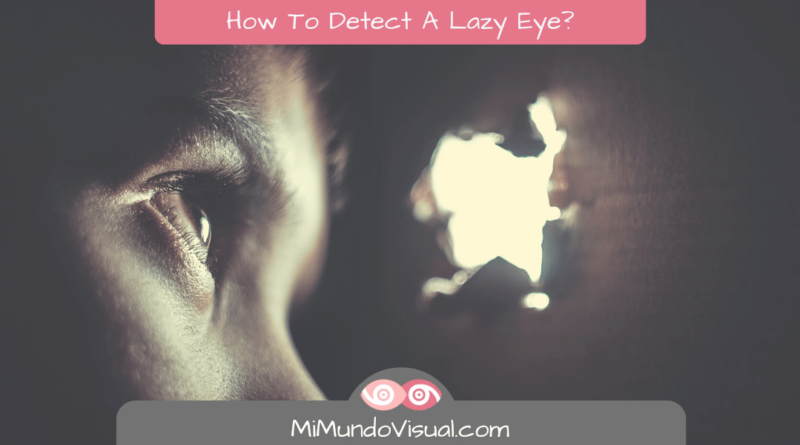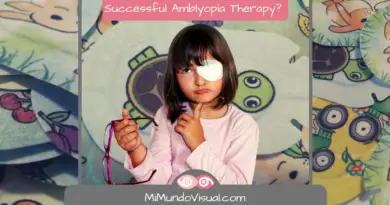How To Detect A Lazy Eye?
Table Of Contents
Lazy eye is not always easy to detect, particularly in infants or children, so we thought it would be helpful to write an article about this and point you to some clues on how to detect a Lazy Eye.
To do this, we should start by listing some of the symptoms of Amblyopia. Once you are familiar with the symptoms, it will be easier for you to detect a Lazy Eye. We will also discuss how we can detect Amblyopia or Lazy Eye in infants, children, and adults. However, remember that considering a yearly checkup with the eye doctor is our best advice.
Having said that, how can we detect a Lazy Eye?
More About Amblyopia or Lazy Eye
- How Do I Know If I Have A Lazy Eye?
- What Causes Amblyopia Or Lazy Eye?
- How To Detect A Lazy Eye?
- What is Amblyopia?
- 6 Eye Patch Therapy Inconveniences We Are Not Told About
- How To Choose The Best Eye Patch For My Child?
- Contact Lenses For Children With Lazy Eye!
- 5 Questions About Lazy Eye In Adults!
- Lazy Eye In Adults – Little Everyday Difficulties That May Be Due To Amblyopia!
Detecting Amblyopia in infants will -for obvious reasons- be more complicated compared to observing it in a child or an adult.
A child or adult can communicate and describe a situation, making detection easier.
As a recap: Amblyopia occurs when one of the two eyes has a better visual acuity than the other.

The brain typically receives visual information from both eyes. It merges these two pieces of visual information to form a clear image with the advantages of added depth perception.
When these two images are too different, the brain will select the sharper, clearer image and avoid the other: The image that is not ‘as good’ is the information being sent to it by the lazy eye. The eye becomes ‘lazy’ because the other eye does most of the visual work. Do not that Amblyopia can also occur in both eyes.
If you want to learn more about Amblyopia, you can read about it in the following article, where we discuss the causes of lazy eye, the symptoms, how Amblyopia can be treated, and how to prevent it.
Amblyopia, unlike strabismus, cannot be diagnosed by noticed visually. There is no apparent defect.
Detecting strabismus is easier as we can visually detect misaligned eyes. One eye is turned to one side or the other, inward, outward, upward, or downward.
On the other hand, a lazy eye is easier to diagnose if a visual acuity test is performed on each eye.
Do note that Amblyopia can develop as a consequence of strabismus. This fact does not imply that all amblyopes suffer from strabismus.
What Are the Symptoms allowing us to Detect a Lazy Eye?
Amblyopia occurs when visual acuity does not develop in one or both eyes
The result is poor vision, even with refractive correction (glasses/lenses). It results in a lack of binocular vision. Usually, both eyes can send similar images to the brain. The brain can combine the two images seamlessly and create a single 3D image.
But what happens when the brain cannot combine the two images sent to it by your eyes?
By not being able to combine the two images, the brain starts to eliminate the poorer-quality image, the one provided by the lazy eye. This results in even less development in the Lazy Eye and even worse vision.
According to the Spanish Association of United Optometrists, between 3 and 5% of the population is estimated to suffer from Amblyopia. It is considered the leading cause of decreased visual acuity in children.
Symptoms of Amblyopia or Lazy Eye:
- Blurred vision
- Double vision
- Poor depth perception
- Eyes do not seem to coordinate correctly, one eye may go in a different direction than the other, and there may be, in some cases, a deviation of one eye (strabismus).
- Frequent headaches
- Visual fatigue
- Squinting, closing one eye, or tilting the head
- Resistance to playing tossing and catching games
- Appears clumsy
Going to the eye doctor for a medical examination is essential, as Amblyopia is not apparent without an eye exam.
It is especially advisable to see an ophthalmologist if there is a family history of any kind of similar visual disorder like Amblyopia, strabismus, childhood cataracts, or any other ocular pathology that may be hereditary.
Detecting 'Lazy Eye' in Babies
The early signs of Amblyopia in infants can vary from baby to baby. Still, some symptoms can be a clue that the condition of Amblyopia may be present.
It is, therefore, necessary to closely observe how our baby’s eyes behave and move:
- Some babies with Amblyopia have one of the two eyes shifting inward or at a different angle.
- They may have a drooping eyelid
- They may close one eye more often than the other.
- They may cover their lazy eye with one hand to help them concentrate better as they grow.
In the first 4 months, the baby’s vision is still blurry. Our children will gradually adapt to their new environment, so their eyes are expected to cross from time to time, which is typical in the development of an infant.
However, the only way to know for sure if our baby has a lazy eye is to make an appointment with the eye doctor so that they can check your child’s eyesight.

Detecting Lazy Eye in Children
When a child has a lazy eye, in many cases, they do not even know that they have a visual problem.
The child sees what they have always seen and is unaware of what they should see.
So how can parents detect if their son or daughter has a lazy eye?
An amblyopic child usually has problems with depth perception, as their binocular or 3D vision is generally limited or non-existent.
- Our child may have trouble catching or throwing objects.
- Often trips or bumps into things, walls, or other people and appears clumsy.
- If one is not interested or has difficulty playing ball sports
When practicing a sport, we need our ability to perceive space and depth. Both eyes are required to know at what exact distance the things and people are around us. - It may affect school performance, as your child may have difficulty with fine motor skills:
- May skip letters when writing in a word, may have trouble writing on the same line, show difficulty reading, read slower than average or skip entire sentences or even repeating them, difficulty in identifying letters, lack of concentration, problems with math, etc.
- Turn their head when watching TV.
- Rubbing eyes, squinting, or covering one eye may indicate that one eye is weaker, and the child is making adjustments to improve his vision.
It would be advisable to have an eye exam as early as 6 months or 1 year to detect abnormalities in the child’s visual health.
As we know, it is vital to detect Amblyopia as early as possible, especially before the visual system is fully developed, so treatment can be as effective as possible.
The amblyopic child may go untreated for years, unaware that they suffer from Amblyopia if a checkup has not been performed before where it could have been detected.
More about amblyopia in children
- 7 Tips On How To Be Successful With Amblyopia Therapy For Your Child
- How To Remove An Eye Patch Without Pain?
- 6 Eye Patch Therapy Inconveniences We Are Not Told About
- How To Choose The Best Eye Patch For My Child?
- Contact Lenses For Children With Lazy Eye?
- Prepare For Your Visit With the Eye Doctor?
Download Free Amblyopia Guide
How to Detect Lazy Eye in Adults?
Amblyopia usually occurs during the first years of life and is usually the result of poor visual development.
For that reason, the possibility of developing a Lazy Eye in adulthood is not common.
At the same, many adults still suffer from Amblyopia, and its symptoms do not differ from those of children.
Amblyopia can also be treated in adulthood, as shown by a large number of studies. However, it is much harder. New studies show brain circuitry can change at any age, despite the widespread belief that Amblyopia cannot be effectively treated after the age of 8.
The fact is that, regardless of a person’s age, the visual system (composed of the eyes, visual pathways, and brain) can be retrained thanks to the brain’s plasticity. In the particular case of lazy eye, binocular vision, the cause of Amblyopia, can be trained.
It is also true that treatment is more effective when performed at an earlier age since the plasticity of the brain also decreases as the person ages.
But it is never too late, and it is always possible to retrain the visual system at any age in order to treat Amblyopia.




